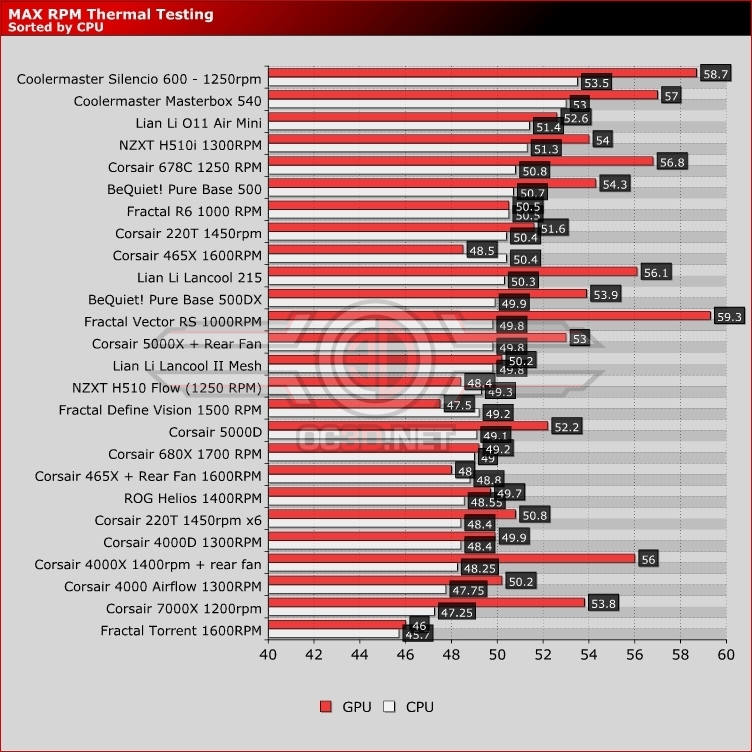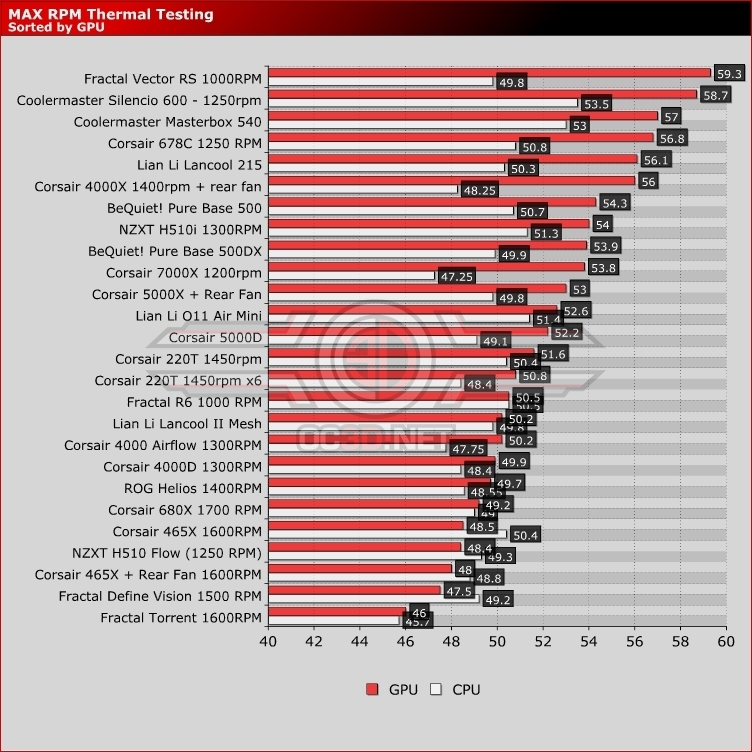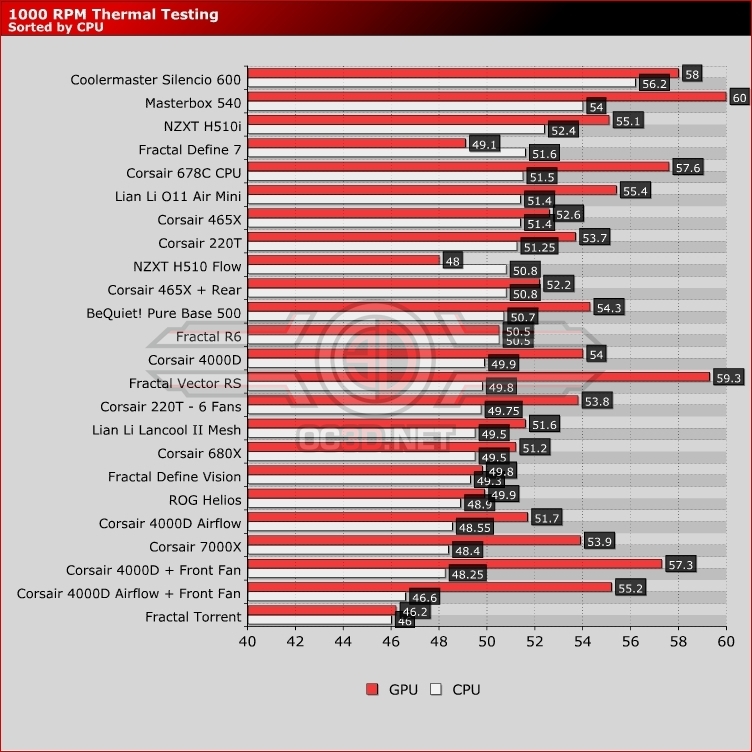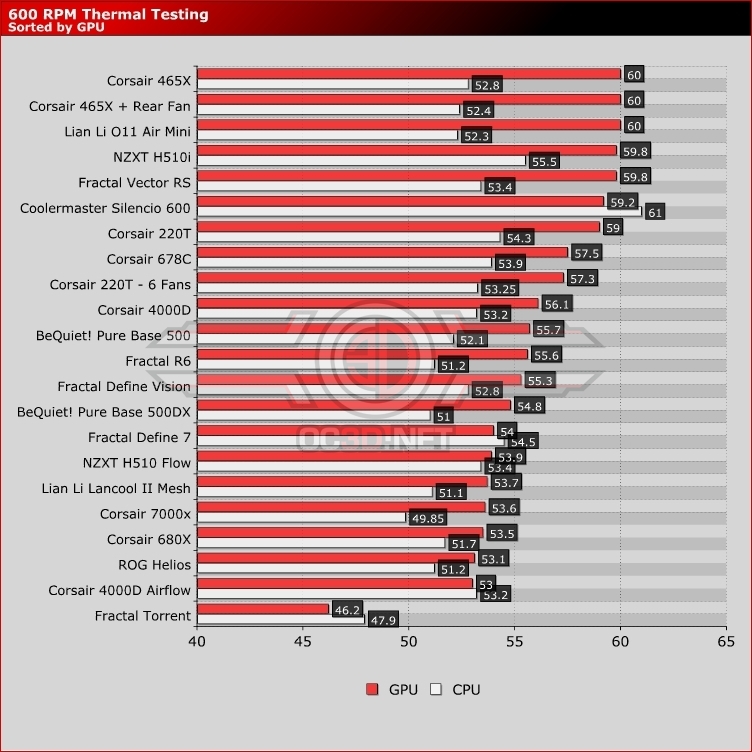NZXT H510 Flow Case Review
Cooling Performance Â
Thermal performance is an essential factor for any PC case. Your system may look fantastic and seem silent from the outside, but all of that is for nought if your PC has the internal temperature of an oven. Your PC case needs enough airflow for your components to remain cool under load and to prevent any form of thermal throttling. For our test, we used the following hardware using fixed fan speeds (so that only the case and its included fans can influence thermal performance).
Â
NZXT H510 Flow
Intel i9-9700K @4.8GHz at 1.2V
ASUS ROG Strix Z370-F Gaming @ 100% Current Capacity/ LL lvl16
Cooler Master Hyper 212 Black Edition @ 9V via Fan Speed Reducer
Nvidia GTX 980 Reference @ 60% Fixed Fan Speed
Corsair LP Vengiance LP (Grey) @ 3200MHz
Corsair MP500 M.2 NVMe SSD
Corsair RM550X Power Supply
The graph below showcases Delta temperatures with a controlled ambient temperature of 20 degrees Celsius.
Max RPM
In the chart below we have data from NZXT’s H510i chassis and NZXT’s new H510 Flow. As you can see, we got much better thermals from the H510 Flow, both in our CPU and GPU-focused graphs. When it comes to GPU thermals, the H510 Flow is a full five degrees cooler. That’s a big difference. Â
Â
1000 RPM Tests
At 1000 RPM, the H510 Flow continues to deliver stronger thermals than the H510i. NZXT has clearly improved their H510 chassis with their new Flow model, delivering a 7-degree drop in GPU thermals. This is why GPU-focused airflow matters!
600 RPM Tests
In our low RPM tests, NZXT’s H510 Flow continues to dominate the 510i in terms of GPU thermals. The new fan positioning and front mesh of the H510 Flow clearly deliver stronger GPU-focused airflow and give us a cooler-running system. If these tests make one thing clear, it is that airflow matters.Â









